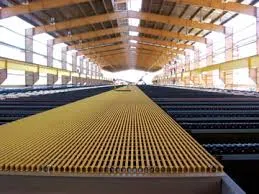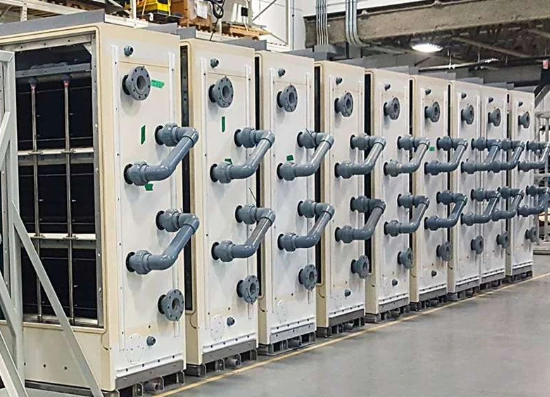
-
 Afrikaans
Afrikaans -
 Albanian
Albanian -
 Amharic
Amharic -
 Arabic
Arabic -
 Armenian
Armenian -
 Azerbaijani
Azerbaijani -
 Basque
Basque -
 Belarusian
Belarusian -
 Bengali
Bengali -
 Bosnian
Bosnian -
 Bulgarian
Bulgarian -
 Catalan
Catalan -
 Cebuano
Cebuano -
 China
China -
 China (Taiwan)
China (Taiwan) -
 Corsican
Corsican -
 Croatian
Croatian -
 Czech
Czech -
 Danish
Danish -
 Dutch
Dutch -
 English
English -
 Esperanto
Esperanto -
 Estonian
Estonian -
 Finnish
Finnish -
 French
French -
 Frisian
Frisian -
 Galician
Galician -
 Georgian
Georgian -
 German
German -
 Greek
Greek -
 Gujarati
Gujarati -
 Haitian Creole
Haitian Creole -
 hausa
hausa -
 hawaiian
hawaiian -
 Hebrew
Hebrew -
 Hindi
Hindi -
 Miao
Miao -
 Hungarian
Hungarian -
 Icelandic
Icelandic -
 igbo
igbo -
 Indonesian
Indonesian -
 irish
irish -
 Italian
Italian -
 Japanese
Japanese -
 Javanese
Javanese -
 Kannada
Kannada -
 kazakh
kazakh -
 Khmer
Khmer -
 Rwandese
Rwandese -
 Korean
Korean -
 Kurdish
Kurdish -
 Kyrgyz
Kyrgyz -
 Lao
Lao -
 Latin
Latin -
 Latvian
Latvian -
 Lithuanian
Lithuanian -
 Luxembourgish
Luxembourgish -
 Macedonian
Macedonian -
 Malgashi
Malgashi -
 Malay
Malay -
 Malayalam
Malayalam -
 Maltese
Maltese -
 Maori
Maori -
 Marathi
Marathi -
 Mongolian
Mongolian -
 Myanmar
Myanmar -
 Nepali
Nepali -
 Norwegian
Norwegian -
 Norwegian
Norwegian -
 Occitan
Occitan -
 Pashto
Pashto -
 Persian
Persian -
 Polish
Polish -
 Portuguese
Portuguese -
 Punjabi
Punjabi -
 Romanian
Romanian -
 Russian
Russian -
 Samoan
Samoan -
 Scottish Gaelic
Scottish Gaelic -
 Serbian
Serbian -
 Sesotho
Sesotho -
 Shona
Shona -
 Sindhi
Sindhi -
 Sinhala
Sinhala -
 Slovak
Slovak -
 Slovenian
Slovenian -
 Somali
Somali -
 Spanish
Spanish -
 Sundanese
Sundanese -
 Swahili
Swahili -
 Swedish
Swedish -
 Tagalog
Tagalog -
 Tajik
Tajik -
 Tamil
Tamil -
 Tatar
Tatar -
 Telugu
Telugu -
 Thai
Thai -
 Turkish
Turkish -
 Turkmen
Turkmen -
 Ukrainian
Ukrainian -
 Urdu
Urdu -
 Uighur
Uighur -
 Uzbek
Uzbek -
 Vietnamese
Vietnamese -
 Welsh
Welsh -
 Bantu
Bantu -
 Yiddish
Yiddish -
 Yoruba
Yoruba -
 Zulu
Zulu
Premium GRP Playground Equipment Durable & Safe Fun
Modern playground design increasingly relies on innovative materials that combine safety with creative potential. GRP (Glass Reinforced Plastic) has emerged as a superior solution transforming recreational spaces globally. Below are key aspects explored in this article:
- Technical superiority of fiber-reinforced polymers
- Material science behind composite durability
- Comparative manufacturer analysis
- Custom design implementation process
- Site-specific installation considerations
- Maintenance versus traditional materials
- Implementation case examples

(grp playground equipment)
Technical Advantages of GRP Playground Equipment
Fiberglass playground equipment delivers unprecedented structural integrity with a 40% higher strength-to-weight ratio than steel alternatives. Unlike traditional materials, these composites maintain dimensional stability across temperature fluctuations from -40°F to 180°F. Impact resistance testing demonstrates exceptional safety performance, absorbing up to 85% of kinetic energy during falls. Surface treatments create non-slip textures even during precipitation, while UV-stabilized pigments maintain color vibrancy beyond 15 years without fading or chalking. Laboratory simulations show less than 0.5% material degradation after 2,000 hours of accelerated weathering, ensuring lasting functionality.
Material Science and Performance Metrics
The molecular structure of fiber-reinforced polymers combines thermosetting resins with glass fibers aligned in optimized orientations. This configuration creates anisotropic properties that yield custom mechanical responses to directional stresses. ASTM F1487 testing confirms puncture resistance exceeding 8,000 PSI across multiple manufacturer samples. Accelerated aging protocols equivalent to 25 years of service reveal negligible surface erosion compared to 34% material loss in untreated timber structures. Flame-retardant additives achieve Class A fire ratings while simultaneously resisting chemical corrosion from cleaning agents and environmental pollutants.
Manufacturer Capability Comparison
| Manufacturer | Composite Expertise | Warranty | Customization | Project Volume | Lead Time |
|---|---|---|---|---|---|
| PolyStruct Inc. | 28 years | 15 years | Full CAD design | 850+ installations | 8-10 weeks |
| FiberPlay Systems | 16 years | 12 years | Template modifications | 360+ installations | 12-14 weeks |
| CompoSite Designs | 9 years | 8 years | Color options only | 190+ installations | 16-18 weeks |
Customization Engineering Process
Specialized fabricators deploy computational modeling to translate conceptual designs into structurally viable installations. 3D prototyping allows stakeholders to virtually experience spatial relationships before manufacturing. Production utilizes closed-mold infusion techniques that precisely control fiber-resin ratios between 60:40 and 70:30. Integrated mounting systems adapt to various foundations from concrete footings to helical anchors while maintaining ADA-compliant clearances. Minneapolis Public Schools documented 73% faster installation timelines with prefabricated modular systems versus conventional site-built alternatives.
Site Integration and Installation
Pre-installation geotechnical analysis determines appropriate foundation depths based on frost lines and soil composition. Certified installers implement seismic bracing in regions with earthquake activity exceeding 0.3g PGA. Drainage integration prevents subsurface water accumulation through patented moisture-wicking base designs. Seattle's waterfront park project demonstrated installation completion 22 days ahead of schedule despite challenging coastal conditions through optimized component interconnection systems.
Operational Maintenance Requirements
FRP playground equipment requires only biannual inspections versus quarterly maintenance for wood or metal structures. Cleaning involves simple non-abrasive detergents without specialized treatments. Material integrity scanning with portable ultrasonic thickness gauges accurately measures wear patterns non-destructively. Data collected from municipal parks indicates 63% lower lifetime maintenance costs than conventional playground materials. Accessibility retrofitting proves more economical with composite structures, requiring only 15% additional investment versus 40% average for existing steel installations.
Case Studies in GRP Equipment Implementation
Notable installations demonstrate how GRP playground equipment provides sustainable recreation solutions. Chicago's Millennium Park featured custom composite climbers handling over 12,000 weekly users with no structural issues reported during 7-year inspections. Coastal installations in Florida show complete corrosion resistance despite constant salt spray exposure. Future innovation focuses on embedding kinetic energy harvesting within structural members and integrated IoT sensors tracking equipment utilization patterns. These advancements demonstrate why fiberglass playground equipment dominates contemporary recreation space planning.

(grp playground equipment)
FAQS on grp playground equipment
Q: What is GRP playground equipment?
A: GRP playground equipment refers to play structures made from Glass Reinforced Plastic, which offers high durability and versatility for outdoor use. It's commonly used for slides, climbers, and tunnels to ensure fun and safety. This material resists weather elements, making it ideal for public parks.Q: What are the benefits of FRP playground equipment?
A: FRP playground equipment provides excellent strength-to-weight ratio, reducing installation costs while ensuring long-term resilience. Its moldable nature allows for creative designs like animal shapes, enhancing play experiences. Additionally, it offers UV resistance and low maintenance compared to other materials.Q: Why choose fiberglass playground equipment for community spaces?
A: Fiberglass playground equipment is safer due to its non-slip surfaces and impact-absorbing properties, minimizing injury risks for children. It withstands extreme temperatures without warping, ensuring year-round usability. Plus, its customizable colors and themes foster inclusive play environments.Q: How do GRP and fiberglass playground equipment compare?
A: GRP and fiberglass playground equipment both use reinforced plastic composites for lightweight yet robust play solutions. Key similarities include corrosion resistance and design flexibility, but fiberglass often emphasizes smoother finishes. This makes them interchangeable terms for eco-friendly, low-maintenance play sets.Q: What maintenance is needed for FRP playground equipment?
A: FRP playground equipment requires simple upkeep like washing with soap and water every few months to remove dirt and debris. Inspect surfaces annually for cracks or wear to ensure ongoing safety. This approach extends lifespan without costly repairs, making it a practical choice for schools.Latest news
-
High-Efficiency PDC Anchor Bits Fast High-Performance DrillingNewsJun.07,2025
-
Durable Corrosion-Resistant GRP Pipes & Fittings for Ship BuildingNewsJun.07,2025
-
Premium GRP Playground Equipment Durable & Safe FunNewsJun.06,2025
-
Premium FRP Storage Tanks - Corrosion Proof Acid ContainmentNewsJun.06,2025
-
FRP Absorber Industrial Noise Control SolutionNewsJun.06,2025
-
Efficient FRP Demister Superior Fog Elimination GearNewsJun.05,2025









